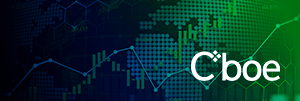By Louisza Court, Director, Marketing APAC
The 4th of May 2022, marked the eleventh anniversary of the Australian market licence granted to Chi-X Australia (now Cboe Australia).
So it is a fair time to ask: why does Cboe Australia exist and what has it done for me?
The market licence granted to Cboe Australia required significant regulatory reforms that had rare bipartisan political support borne of enduring widespread support among all stakeholders in Australia’s financial market infrastructure.
That genesis dominates the reason why Cboe Australia exists: to serve the interests of all stakeholders in Australia’s financial market infrastructure. How has Cboe Australia lived up to this? In two main ways.
Innovation
Firstly, Cboe Australia has innovated.
Since 4 May 2011, Cboe Australia has introduced five innovative and novel market infrastructure products, launching:
- competition in the trading of listed securities on 31 October 2011;
- a derivatives (warrants) market on 25 November 2015;
- a market in depositary receipts on 4 October 2018;
- uniquely quoted ETFs and QMFs on 15 October 2019; and
- on 12 May 2022, a market in products providing direct exposure to eligible crypto assets.
Innovation requires a willing community of stakeholders that includes trading participants, investors, regulators and issuers, each of whom have recognised the benefits of making an investment in novel products and market infrastructure that enhance Australia’s markets.
It isn’t always easy, and success can be about how you respond to errors and mistakes, but it is essential if Australia’s financial markets are to get better and compete globally.
Permanent changes to Australia’s Market Infrastructure Services
Secondly, Cboe Australia has introduced products for participants, investors and issuers that have permanently and dramatically changed the landscape for market infrastructure services.
When the Chi-X Group announced it was applying for a licence to operate markets in Australia, firms applying to become a participant of an Australian stock exchange were charged up to $250,000 for that privilege. This fee is zero for Cboe Australia participants and no more than $25-50,000 at any competing Australian exchange.
When Chi-X Australia commenced trading in 2011, many participants were charged over $500,000 a year in trade reporting fees. They are now charged a maximum of $24,000. Standard trading fees have decreased by nearly fifty percent. The fees for Cboe Australia infrastructure and market data products are a fraction of those levied prior to the launch of our markets.
Prior to Chi-X commencing competition in the quotation of investment products, exchanges charged issuers fees that were up to three times current charges and Australia had some of the world’s most expensive ISIN fees.
Other market infrastructure developments that have occurred since the launch of Cboe Australia, and in which we have played a role, include the introduction of global technology protocols and order entry controls, the latter of which has changed the landscape regarding the fines previously imposed on firms for fat finger errors.
Cboe Australia and SIAA members have played a leading role in making these changes for the benefit of Australia’s markets.
What’s next?
The next stage of market infrastructure enhancements are now coming to Australia, with the launch of world leading market technology platforms by Cboe Australia. There is a wealth of opportunity for Cboe Australia and SIAA members to work together to bring significant benefits to Australian markets, including in the areas of futures, options, clearing and technology resilience.
Coming from a market share and trading volumes of ‘nil’, to where we are today, has happened because of the work by our stakeholder community and its drive to get worthwhile things done. It has delivered significant benefits, and the further innovation and transformative market infrastructure products coming to Australia will continue this trend.
This article is general information and does not consider the circumstances of any investor or constitute advice. No fund or product mentioned in this article constitutes an offer or inducement to enter into any investment activity. Material published in SIAA Newsroom is copyright and may not be reproduced without permission. Any requests for reproduction will be referred to the contributor for permission.


